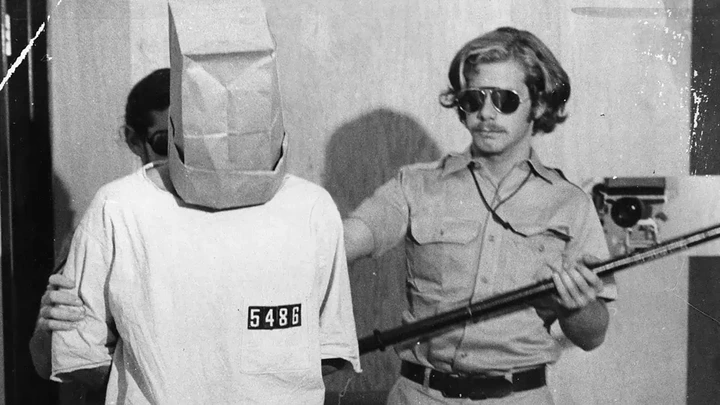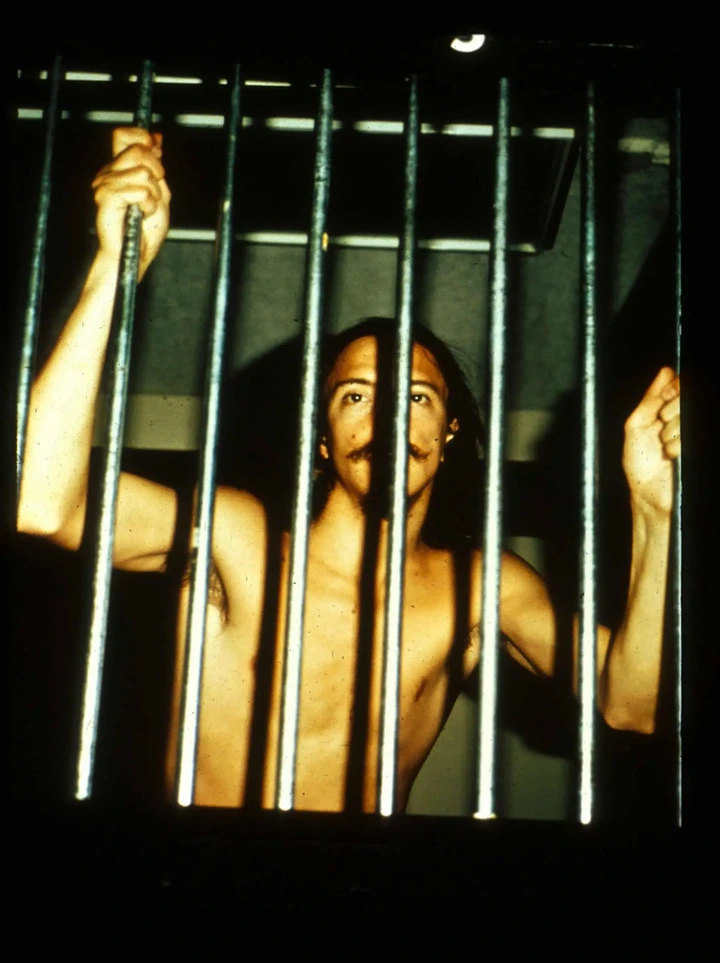A French historian specializing in science has conducted an in-depth investigation into the real events behind the Stanford prison experiment, uncovering that the 'guards' were deliberately instructed to act with cruelty. His research has now been translated into English.

View pictures in App save up to 80% data.
A recent translation of a 2018 work by French science historian Thibault Le Texier calls into question the assertions made by one of psychology's most renowned experiments.
Exploring the Stanford Prison Experiment: Unraveling the Myth, published recently in English, documents serious limitations of the study – including that student “guards” were actually coached to dehumanise their “prisoners” – and asks how such a flawed experiment became so influential.
A notorious 'cell' located in the basement of a university
You’ve likely heard of the Stanford prison experiment. In 1971, 24 young male volunteers were randomly assigned to the roles of “inmates” and “guards” in a pretend prison in the basement of Stanford University’s psychology department.
The circumstances escalated rapidly. By the second day, the volunteers assigned as guards had started to inflict psychological torment on the inmates.
Deprived of clothing, blinded by hoods, bound by chains, and subjected to starvation and sleep deprivation, the inmates experienced severe psychological distress, with half of them experiencing nervous breakdowns. Consequently, by the sixth day, the experiment – originally intended to continue for two weeks – was abruptly terminated.
The experiment was conducted by social psychologist Philip Zimbardo, who died last year at the age of 91. He argued that the transformation of seemingly normal people into cruel guards and passive prisoners was proof that social situations have the power to corrupt human behaviour.

View pictures in App save up to 80% data.
His sensational findings and the dramatic story of the experiment, illustrated with photos of uniformed guards in aviator shades and batons standing threateningly over cowering and hooded prisoners, made Zimbardo and his experiment famous.
Since it was conducted over five decades ago, the lessons from the experiment have been applied to a burgeoning number of situations beyond prison. By 2007 Zimbardo used it to explain corporate fraud, military torture, cult behaviour and even genocide.
A newly released English version of French scholar Thibault Le Texier’s 2018 work reveals a more intricate and concerning narrative surrounding the renowned study. It raises questions about Zimbardo’s credibility as the storyteller of his own findings.
Critiques of the experiment are not a recent development; concerns regarding its methodology and Zimbardo's claim that situations can dominate our personalities have been raised since 1975. However, Le Texier's comprehensive findings, now accessible in English for the first time, provide an in-depth narrative of the events that transpired behind the scenes.
Trained to be ruthless
By utilizing archival materials, previously unreleased video recordings, transcripts, and in-depth interviews with those involved – such as the guards, inmates, and researchers – Le Texier constructs a detailed chronological narrative of the experiment's progression.
Far from being swept up in the situation, archival sources show the guards’ brutality was rehearsed. Contrary to official accounts, before the experiment they were coached by the research team in how to create a psychologically hostile environment.
Zimbardo provided the guards with a set of regulations to enforce, along with methods intended to dehumanize the inmates. As the experiment progressed, the staff motivated the guards to act aggressively and scolded those who showed too much compassion.

View pictures in App save up to 80% data.
In comparison, the inmates were not well-prepared. Many of them imagined their time behind bars would be filled with reading or watching television in their cells. Therefore, they were taken aback by the humiliations they faced, the lack of cigarettes and books, and other forms of entertainment, as well as the often capricious and shifting regulations.
The reactions of the prisoners and guards to the circumstances varied significantly. While some guards embraced their responsibilities with fervor, others showed compassion towards the inmates, sneaking in snacks and cigarettes. One guard even decided to resign.
Certain inmates chose to work together, while others stood firm against authority, and a few even staged a rebellion. One individual initiated a hunger strike. While many sought freedom, they quickly realized that, contrary to what they had been promised, leaving was not an option for them.
Their release would only be granted in the event of a medical or psychiatric crisis. Le Texier discovered that only three prisoners were set free due to claims of emotional turmoil, and at least one of them had pretended to be in distress.
The experiment was halted due to potential failure risks.
Le Texier observed that by the sixth day, the guards were growing more ineffective as the remaining prisoners continued to resist. An unanticipated visit from a lawyer brought to light questions regarding the legality of detaining volunteers without their consent. Both of these elements contributed to the sudden conclusion of the experiment.
A lasting hold on the shared awareness of society.
According to Le Texier, several key elements have contributed to the lasting notoriety of Zimbardo's experiment, including his adeptness at engaging with the media, his talent for making complex ideas accessible to the public, the backing of his university, and the predominantly uncritical reception of his results.
It continues to exert a powerful grip on the public imagination, largely through the promotional flair of its creator.

View pictures in App save up to 80% data.
Le Texier’s book raises important questions about the cultural and political factors that shape research. For example, Zimbardo’s study was conducted during a period of intense anti-authoritarianism and against the backdrop of the 1971 Attica prison riot, the deadliest prison uprising in the United States.
Le Texier's work offers valuable insights into science communication and highlights how media-savvy scientists can effectively create and share compelling narratives.
The Stanford prison experiment may be downplayed or criticized in academic literature for its exaggerated assertions, yet it is improbable that it will fade from the collective consciousness of the public.
According to Le Texier, the experiment has captured our shared awareness so strongly that, although its results may be inaccurate, it seems to convey a significant moral teaching.
Zimbardo had a unique ability to address our deep-seated desire for solutions to the pressing issues of our era. While it may lack solid theoretical grounding and resemble a morality tale masquerading as scientific inquiry, the lasting notoriety of the Stanford prison experiment lies in its perceived insights into how ordinary individuals can descend into malevolence. This narrative continues to resonate, as it offers a compelling tale.

View pictures in App save up to 80% data.
- Hardcover Book
- Le Texier, Thibault (Author)
- English (Publication Language)
- 210 Pages – 08/09/2024 (Publication Date) – Springer (Publisher)
Gina Perry, Science historian with a specific interest in the history of social psychology., The University of Melbourne
This article is republished from The Conversation under a Creative Commons license. Read the original article.









